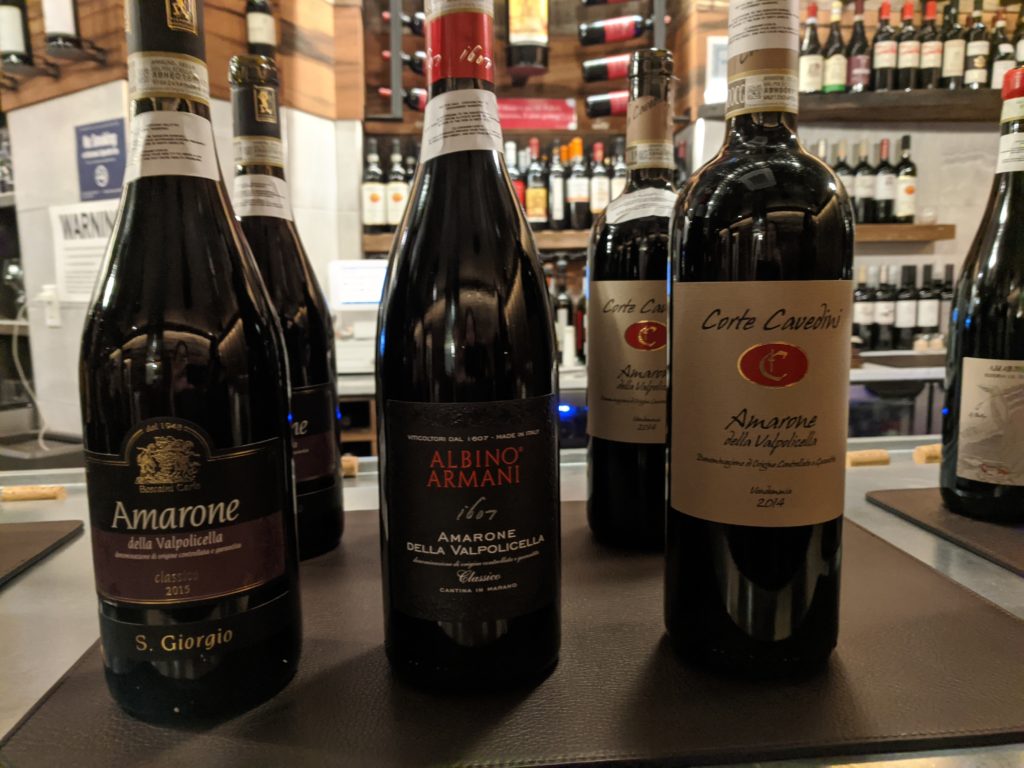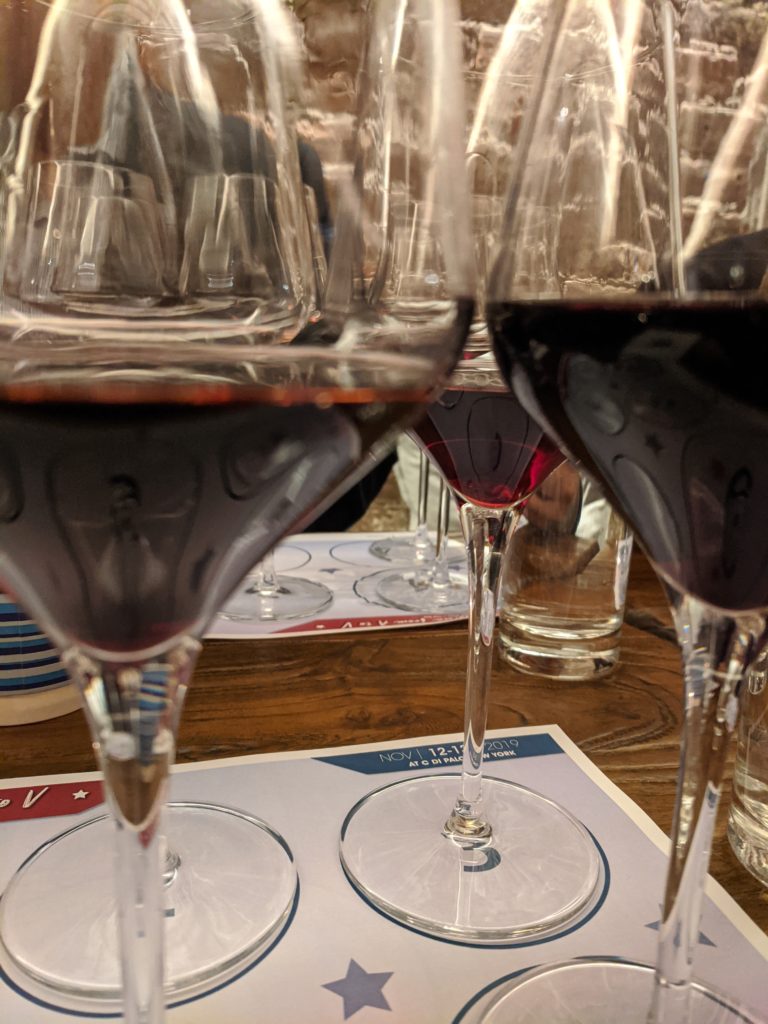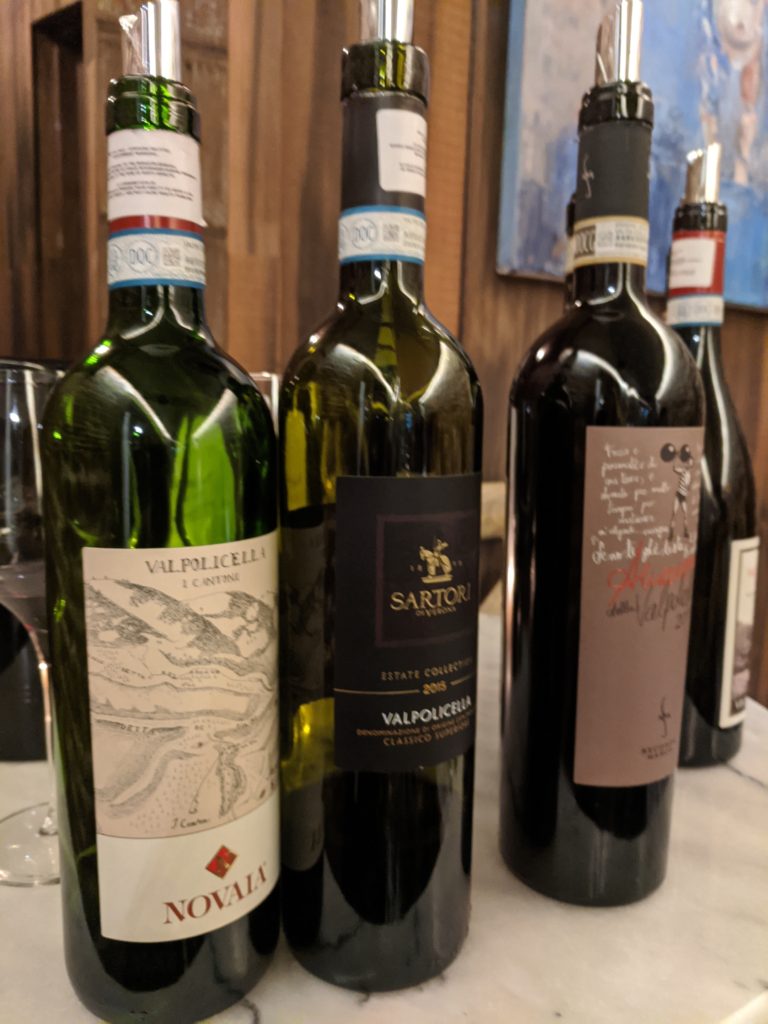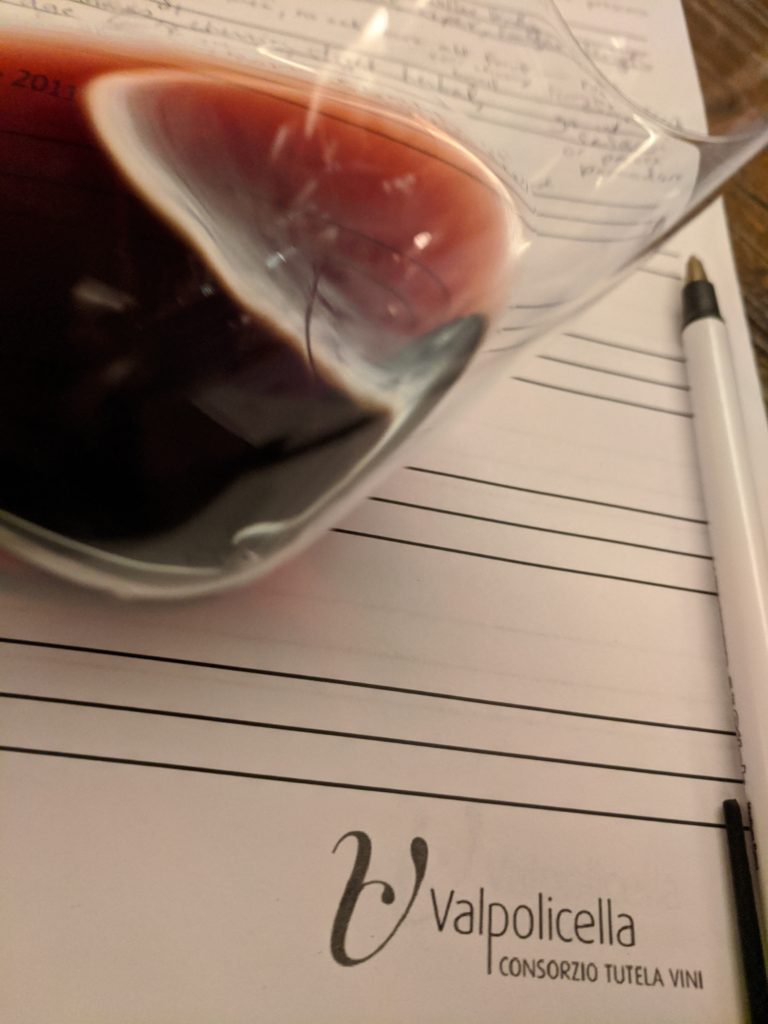
With its long history of wine production dating to the 6th century, Valpolicella is well known. Moreover, it has grown significantly in production over the past 30 years, from 1 million bottles annually to more than 40 million bottles (60 million if you include the full complement of wines). However, as sommelier, Filippo Bartolotta noted, it has been slow to catch up with its reputation, calling it an underdog in the wine world.
At a recent Valpolicella Master Class held in New York City at Café DiPalo, Bartolotta spent time providing a wealth of information to the assembled wine press and trade. In the end, there is a lot to know if one wishes to truly understand this wine, but it is certainly accessible and enjoyable without knowing all of the nuances that make up this family of wines.
Wherefore Art Thou Valpolicella?
Situated north of (the fair city of) Verona in Italy’s Veneto region, the Valpolicella production area comprises three zones: Valpolicella, Valpolicella Classico and Valpantena. Here, east of Lake Garda and protected by the Lessini Mountains, the area is favorably impacted by cool winds and cool nights that fix the color and aroma in the grapes.
Geologically, the area was formed 120 million years ago when two plates collided creating the Alps. The soils are calcareous, with the obvious presence of fossils and dinosaur footprints, imparting minerality to the wines. Volcanic soils are also present underneath the balsamic strata. More recently, major studies on how the varied soils impact on different varieties have been undertaken.
With regard to varieties, Valpolicella is produced from a combination of Corvina, Corvinone, Rondinella, Molinara and other local grapes. As the starring players, Corvina and/or Corvinone can account for 45-95% of the blend, which is a recent change to the requirements. Corvina is known for providing backbone, structure and perfume, similar to Pinot Noir, while the thicker- and darker-skinned Corvinone lends power, color and structure to the wines. Rondinella, which is the other mandatory variety and permitted from 5 to 30%, adds both minerality and acidity. Up to 15% of other indigenous varieties can round out the blend.
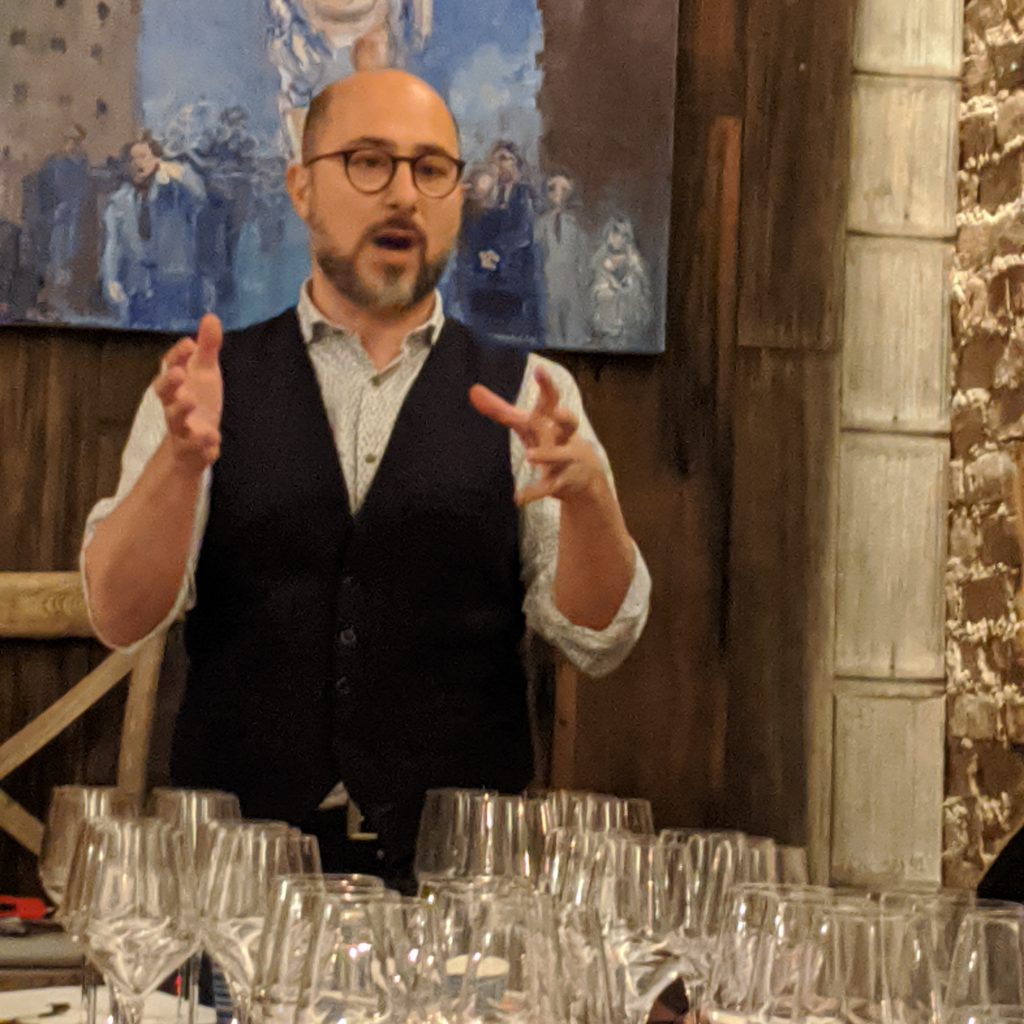
What’s in a Name?
But, as Bartolotta emphasized, the story is much more complicated than climate and soil because Valpolicella is a wine about process rather than about a single variety or even several varieties. In particular, there are four separate wines produced under the Valpolicella umbrella: Valpolicella DOC, Valpolicella Ripasso DOC, Amarone della Valpolicella DOCG and Recioto della Valpolicella DOCG. These differing wines are the result of the historical development of wine in the region. In addition, Valpolicella Superiore DOC are those Valpolicella wines that have been produced from riper grapes, along with one year of aging, which are fuller-bodied in character.
Perhaps the most recognizable of the four, Amarone is produced from the best batches of fruit, which are left to dry in in specialized rooms for a minimum of 100 days. This extended drying period concentrates the sugars and reduces the weight of the grapes by 40%. It is during this process that Corvina truly shines as it undergoes various enzymatic reactions that alters its DNA and ultimately changes its flavor. Further, the grape will defend itself against noble rot, releasing balsamic vinegar aromas. Regardless of the varieties, all of the shriveled grapes are then fermented to dryness, yielding a concentrated, full-bodied wine, which must be aged for at least two years. Amarone Riserva has spent an additional two years of aging.
But, before there was Amarone, there was Recioto, with 2500 years of history! Stemming from the word rece – local lingo for ears – it was the lobes of the berries which garnered more sun exposure and thus higher quantities of sugar. These sugar-laden sections of the grape bunches were dried for lengthy periods of time. Taking advantage of the cold temperatures, the free run juice would be put outside to stop fermentation, the process would then be repeated and eventually the yeast stopped working. Interestingly, the Romans would add sulfur dioxide to kill off the yeast, a practice still used to this day. With high residual sugar levels, these are a rich and decadent dessert wines, which are produced in minute quantities.
Under the less modern and, consequently, less controlled, winemaking conditions of the past, occasionally the result would be Recioto Scapa. If the wine didn’t stop fermenting, it became dry instead of sweet since all of the sugar had been converted into alcohol. Thus, Amarone was originally called Recioto Secco (dry). Taking its name from the word for bitter – amar – Amarone became the official term for this style of wine as of 1936.
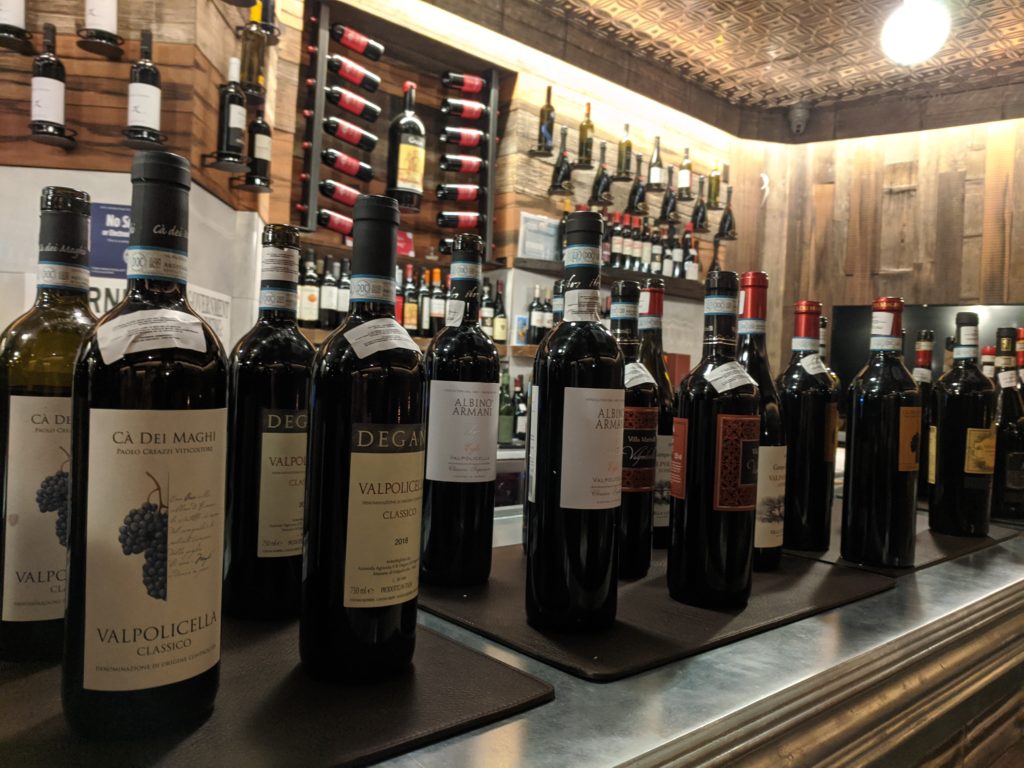
And, sitting somewhere in between Valpolicella and Amarone is Ripasso – translating as one more pass. In this process, Valpolicella wine is added to the leftover Amarone pomace, prompting fermentation to start again, creating wines with higher alcohol, more extraction, fuller body and greater concentrations of phenolics and sweetness.
Please come and drink a cup of wine
With this wide range of wines under the Valpolicella name, there is a lot of diversity and opportunity to find the perfect wine for the right occasion. During the Master Class, we tasted the full complement of these wines, which provided a wonderful introduction to each wine/style. Some are more suited to casual cuisine, while the beautifully balanced sweetness of Recioto is great with (or instead of) dessert.
TASTING NOTES
Sartori Di Verona Valpolicella DOC Classico Superiore 2015
Sartori di Verona is situated in the Negar area, with 50 hectares of vineyards. This wine sees no oak and is more about simple fruit flavors than complexity. It is dry with high acidity, medium tannins and flavors of cherries and a slight herbal note, culminating in long length. With its lively acidity, this is a great match for calamari or pasta pomodoro.
Novaia, Valpolicella DOC Classico Superiore 2016 I Cantoni
This tiny producer has 7 hectares and its vineyards are certified organic. There is some volcanic presence in the soils and a small percentage of dried grapes are incorporated into the wine. Compared to the Sartori di Verona Valpolicella (above), this wine is more concentrated, with riper cherry fruit and more noticeable herbal character. It also displayed greater minerality, a fuller body, slightly lower acidity, lovely tannins and longer length.
Villa Mattielli, Amarone Della Valpolicella DOCG 2015
Villa Mattielli is owned by Roberta Roncolato and her husband, Giacomo, a former F1 pilot. Roberta takes a modern approach to her winemaking, crafting robust wines, which are aged in French oak. This dry, full-bodied wine offered up lots of ripe black fruit, blueberries, dried fruit, a hint of oak and long length.
Secondo Marco, Amarone Della Valpolicella DOCG Classico 2011
This winery’s name literally translates to according to Marco – in this case the wine is made according to owner Marco Speri. The grapes spent 150 days of drying and then went through 45 days of fermentation and maceration, followed by 48 months aging in big Slavonian oak. It is very floral with aromas of rose and violets, as well as gunflint. On the full-bodied palate, it shows flavors of blueberry, blackberry, citrus, and an undercurrent of menthol. Overall, it is hedonistic, sensual, with a ripe sweetness, balanced with good acidity, culminating in very long length.
Villa San Carlo, Valpolicella Ripasso DOC Superiore 2013
Home to a beautiful Venetian villa, Villa San Carlo was purchased by the Pavesi family in 1958. While they planted vineyards early on, they only chose to begin making their own wine in 2009. The oak aged wine offers up smokey, barbecue, earthy, mushroom and black fruit aromas, which persist on the dry, medium+-bodied palate. It has high acidity, good tannins and lush fruit and spice flavors. While not as complex as the Amarone, it provides good value for the money and is lower in alcohol.
Degani, Recioto Della Valpolicella DOCG Classico 2016
Located in the Classico valley, the three Degani brothers took over after their uncle’s death, maintaining the vineyards and winery as a family business. This wine offers up a complex and intense nose of dried fruit, prunes, raisins, burnt sugar, smoke and spice. It is medium sweet with high acidity, full body, yet is elegant, balanced, and beautiful with a fruit-driven palate along with hints of cocoa in the finish and long length. Filippo suggested pairing it with brownies with cranberries.

